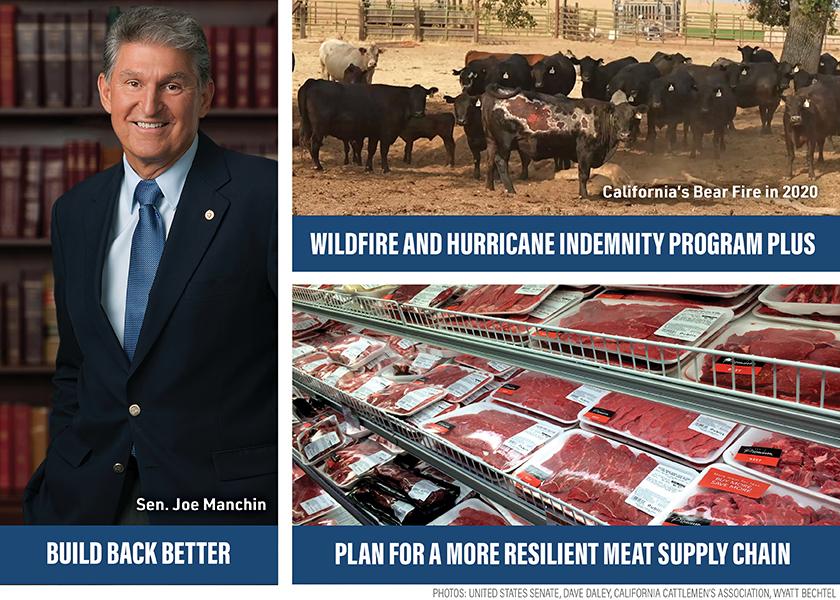2022 Happenings on The Hill

The steps of Capitol Hill are once again full of dress shoes and briefcases, as Congress has returned from holiday break. COVID-19-related legislation continues to run the gavel, while rural America urges Congress to deliver on its economic relief promises. Here are three issues to watch.
Build Back Better
In December, Sen. Joe Manchin, D-W.Va., said he couldn’t support the House-passed version of the $1.75 trillion social spending bill that would have extended child tax credits and created related subsidies.
“My Democratic colleagues in Washington are determined to dramatically reshape our society in a way that leaves our country even more vulnerable to the threats we face,” Manchin says. “I cannot take that risk with a staggering debt of more than $29 trillion and inflation taxes that are real and harmful to every hard-working American at the gasoline pumps, grocery stores and utility bills with no end in sight.”
Pro Farmer Policy Analyst Jim Wiesemeyer doesn’t know how and when the bill will pass but believes the BBB will go through once it has been scaled-back.
WHIP+
USDA planned to release $10 billion in Wildfire and Hurricane Indemnity Program Plus (WHIP+) payments by the end of 2021. Yet, a timeline for distribution is still to be determined. Wiesemeyer says WHIP+ is the “worst implemented program” he’s seen from the Farm Service Agency (FSA) due to the delayed payout. He does, however, see these payments hitting bank accounts by early 2022.
As it stands, the $10 billion in disaster assistance will include:
- $9.25 billion in disaster assis- tance to aid producers who suffered losses due to droughts, hurricanes, wildfires, floods and other qualifying disasters. The funding will extend WHIP+ to cover losses in calendar years 2020 and 2021.
- $750 million for livestock producers with losses in 2021 due to drought or wildfire. This disaster assistance, the first specifically for livestock producers since 2008, will build on top of existing farm bill pro- grams for livestock producers.
A More Resilient Meat Supply Chain
In January, the Biden administration announced it will spend $1 billion in American Rescue Funds to expand independent meat processing capacity as part of a broader initia- tive to break up what it calls a meat and poultry processor monopoly.
Specifically for farmers and ranchers, the White House Action Plan promises in 2022 to:
1. Expand independent processing capacity and support workers and the independent processor industry.
2. Increase transparency in cattle markets, so ranchers can get a fair price for their work.
3. Issue stronger rules under the Packers and Stockyards Act — the law designed to combat abuses by the meatpackers and processors.
4. Issue new “Product of USA” labeling rules so consumers can better understand where their meat comes from.







